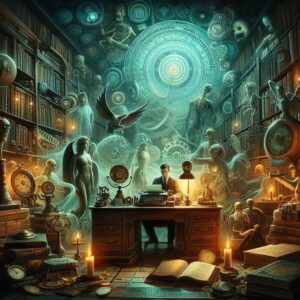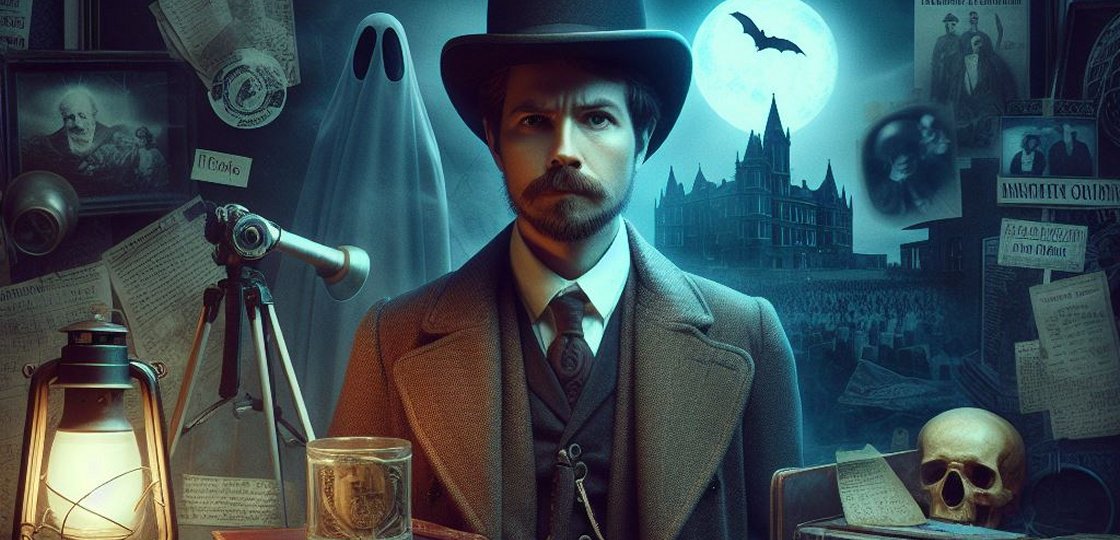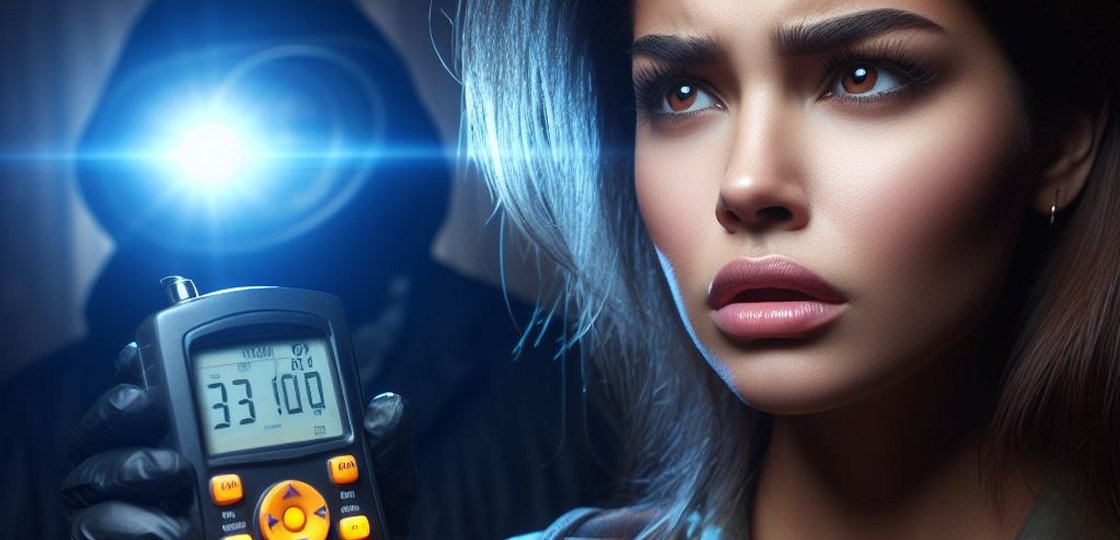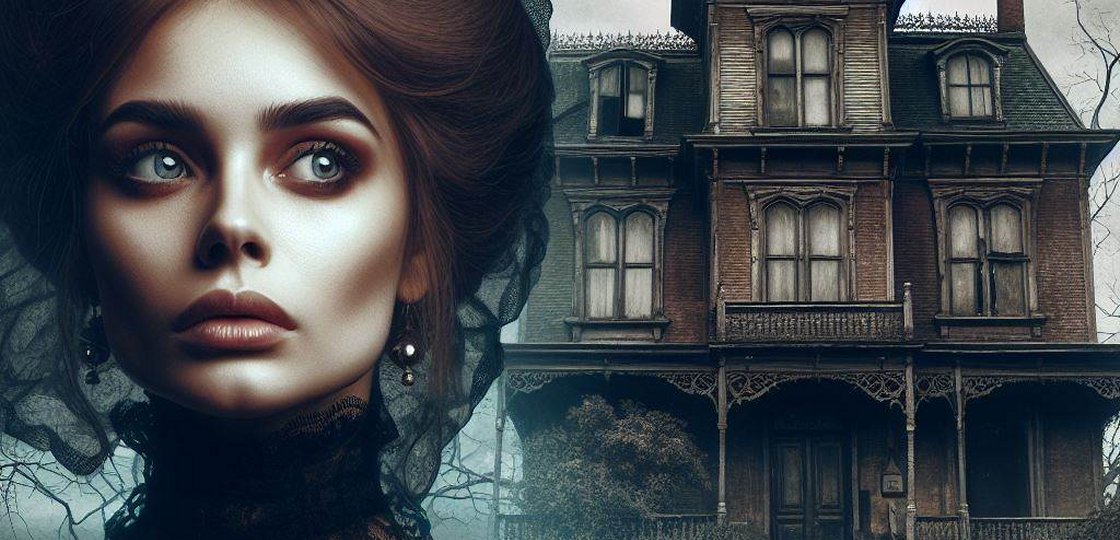Amazingly, there are quite a lot of ghosthunters who believe paranormal investigation is a relatively new thing, inspired by the glut of supernatural reality shows and websites that have popped up since the 1990s.
It’s not.
The quest for answers in the paranormal has actually been a “thing” for almost 150 years at the time of this writing.
This field of study has been around for longer than any of us has been alive. Please take a moment and let that sink in.
150. Years.
As a community, we often find ourselves mired in the debate of where we’re headed. What are our common goals? Our shared vision? What are we doing to advance our understanding of the paranormal?
In order to answer these questions, it may prove useful to take a look at where we’ve been and how it all started.

1870s: The periodical, Rebus, is published in Russia and is devoted entirely to the subject of psychical research.
In 1870 and 1871, the London Dialectical Society was among the first to undertake scientific investigations of phenomena associated with Spiritualism. Their results weren’t all that impressive, but it inspired others to take a closer look for themselves.
1872: William Crookes, a prominent and highly respected physicist, as well as a member of the Royal Society, began conducting experiments with the famous physical medium, Daniel Dunglas Home. Crookes reported he had witnessed paranormal phenomena during these experiments. These claims aroused a great deal of criticism from his more mainstream contemporaries, but the more open-minded among them sought to delve further.
1873: Henry Sidgwick, Frederic W. H. Myers, and Edmund Gurney, all Fellows at Trinity College in Cambridge, formed a loose investigative group that would be dubbed “the Sidgwick Group.” These three men are considered the “Founding Fathers of Paranormal Research” and their ground-breaking research continues to inspire investigators even in the 21st Century. (Or, at least, it should.)
1875: The Psychological Society was founded by Sergeant Cox.
1876: Sir William F. Barrett, another prominent physicist, impressed by the research conducted by William Crookes and the Sidgwick Group, begins to experiment with hypnotized and mediumistic subjects.
1882: Based on his experiments, Barrett helps re-organize the existing Sidgwick Group into the Society for Psychical Research with the primary goal being to establish evidence of psychic phenomena and survival after death. This organization has been Britain’s leading research organization ever since.
1885: The American Society for Psychical Research is founded in Boston, Massachusetts.
1886: The Society for Psychical Research (SPR) attracts the attention and support of noted intellectuals like Sir Arthur Conan Doyle, William James, Sigmund Freud, and Carl Jung.
1886: SPR members, Edmund Gurney, Frederic W.H. Myers, and Frank Podmore publish a 1400+ page book entitled “Phantasms of the Living,” a breakthrough work. This book continues to be a must-read for all serious paranormal investigators.
1900: Research into psychic phenomena begins to intensify across the globe.
1903: Published posthumously two years after his death, Frederic W.H. Myers’ 1300+ page book “Human Personality and the Survival of Bodily Death” represents another groundbreaking text in psychic research and is widely viewed as the most plausible explanation of haunting phenomena. (Another must-read text.)
1914: The Institut Metapsychique International is founded in Paris, France.
1927: J.B. Rhine works with Duke University in North Carolina to develop controlled laboratory experiments that would statistically evaluate claims of psychic phemonena.
1928: The Institut fur Parapsychologie is founded in Berlin, Germany.
1930: At the suggestion of his colleagues, and inspired in part by recent findings of the Society for Psychical Research, J.B. Rhine begins experimental ESP research at Duke University. Due to the success of the experiments, an official research program is devised that establishes psychical research as a legitimate university discipline.
1934: Rhine’s reports concerning the success of his experiments are released. They were highly controversial, but ultimately sparked more interest in further research. Thanks to Rhine’s research successes, the field of parapsychology is born.
1943: Rhine’s reports concerning the success of his experiments in psychokinesis are published. These, too, are highly controversial, but his research continues to inspire further research.
1943: G.N.M. Tyrell publishes “Apparitions” and builds upon the research of Myers from 40 years earlier. (Another must-read text.)
1948: J.B. Rhine’s wife, Louisa, begins research into “spontaneous phenomena,” a.k.a., ghosts.
1951: The Parapsychology Foundation is founded.
1953: Utrecht University, in the Netherlands, hosts the First International Conference on Parapsychological Studies.
1957: The Parapsychological Association is founded.
1960s-1970s: Dream and ESP research is conducted at Maimonides Hospital in Brooklyn, New York.
1962: The Newark College of Engineering in New Jersey becomes one of the first engineering centers in the United States to study psychic ability in people.
1965: J.B. Rhine’s psychic research at Duke University comes to an end.
1968: Lynn Schroeder and Sheila Ostrander visit the Soviet Union. In 1970 they report that Soviet psychical research was far more advanced compared with that of the West, even though Stalin “officially” repressed the research in 1956. According to Schroeder and Ostrander, the Soviet government provided far more funding and support to paranormal research than any other country in the world. The Soviets were alleged to be focusing on how to harness psychic power, especially for military purposes. This is about the same time that Nina Kulagina, a Leningrad housewife with alleged PK abilities, gained the attention of the Soviet government and “dropped from public view” after a few years. The information and data concerning paranormal research conducted in the former Soviet Union represents some of the most controversial information published on the subject.
1969: The Parapsychological Association is admitted to the American Association for the Advancement of Science.
1970s: Russell Targ and Harold Puthoff begin research into out-of-body experiences, clairvoyance, and remote viewing at the Stamford Research Institute in California.
1985: The Koestler Chair of Parapsychology was established at the University of Edinburgh.
One of the last major events of historical importance to this field came by way of the Central Intelligence Agency when they developed a training program based on the Monroe Institute’s research. This declassified program, which many claim saw great success, introduced the paranormal community to remote viewing, the Gateway Process, and the hemi-sync theory.
All this, all of what you’ve just read, is just the TIP of the historical iceberg. As we postulate where we’re headed in our search for understanding, familiarize yourself with where we’ve been. We have a 150-year-old foundation of research and experimentation upon which to build. We should not let it go to waste.





